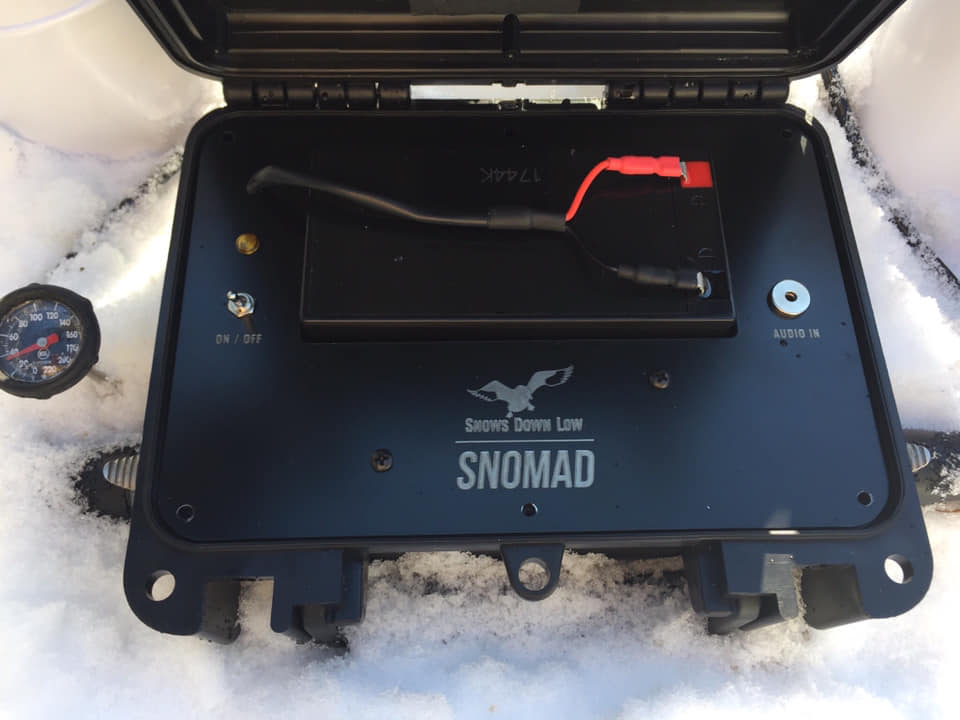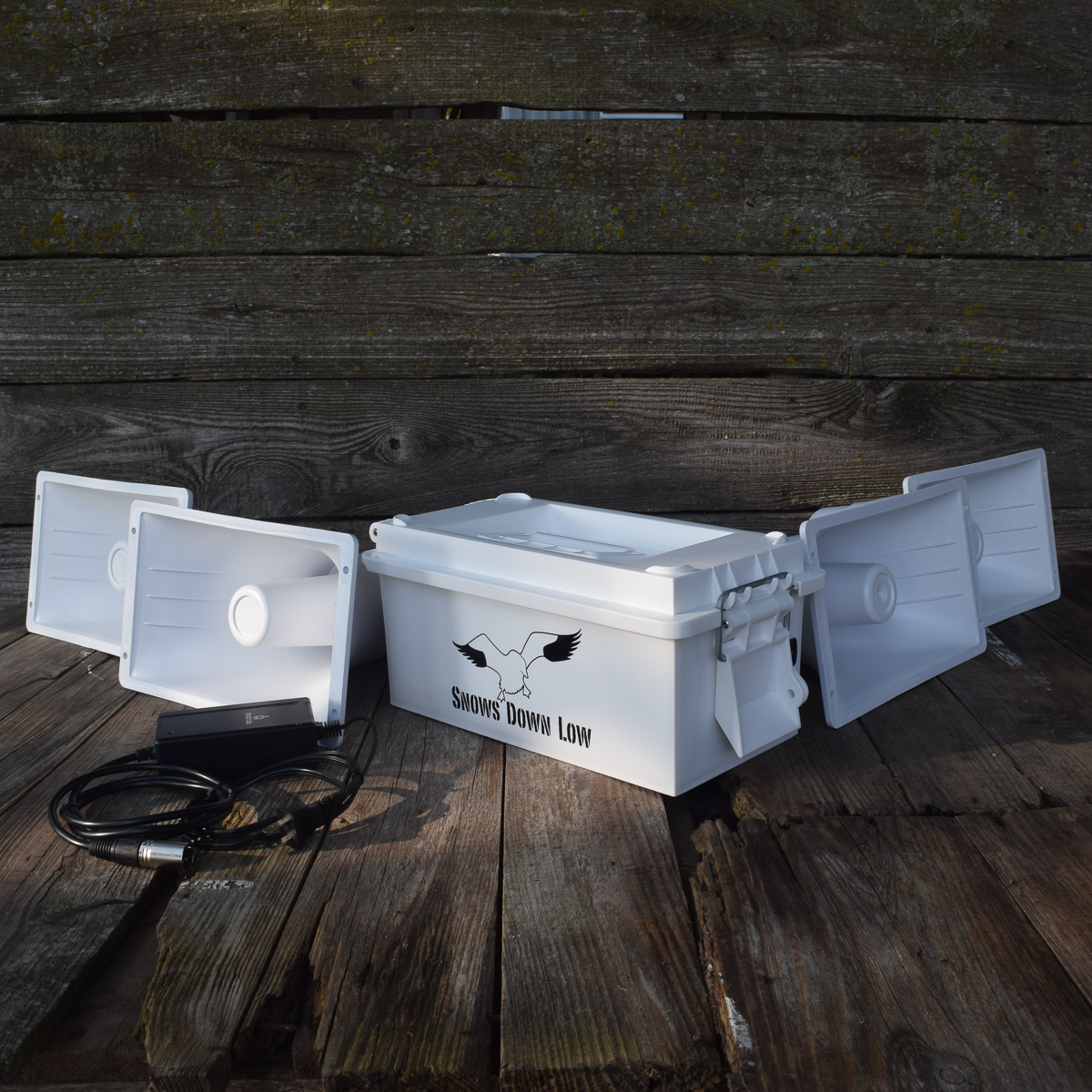As any serious snow goose hunter knows, reliable battery performance can make or break a hunt. Whether you’re running electronic calls that mimic precise goose sounds or operating motion decoys that create realistic movement, understanding your battery options is crucial.

The Battery Basics: SLA, Deep Cycle, and LiFePo4
When it comes to powering electronic calls and motion decoys for snow goose hunting, three main types of 12-volt batteries dominate the conversation: Sealed Lead Acid (SLA), Deep Cycle Lead Acid, and Lithium Iron Phosphate (LiFePo4). Each has its strengths and weaknesses depending on your needs, budget, and conditions. Think of SLA batteries as dependable workhorses, deep cycle lead acid batteries as a more specialized version of SLA designed for frequent discharges, and LiFePo4 batteries as the high-tech upgrade offering superior performance in almost every category.
- Weight and Portability:
- SLA and deep cycle batteries are heavier and bulkier compared to LiFePo4 batteries.
- The lighter weight of LiFePo4 batteries makes them ideal for hunters who need to carry gear across rough terrain.
- Performance and Lifespan:
- SLA batteries typically last around 300-500 charge cycles and should not be discharged beyond 50% of their capacity to avoid damage.
- LiFePo4 batteries can endure 3,500-4,000 cycles and maintain performance even when discharged up to 80%, providing more usable energy per charge.
- Cost:
- SLA batteries are more affordable upfront but require frequent replacements (every 2-3 years).
- LiFePo4 batteries have a higher initial cost but are more economical in the long run due to their extended lifespan.
- Durability:
- Both SLA and deep cycle lead acid batteries are susceptible to damage from vibrations or impacts, which can occur during transport or use in rugged environments.
- LiFePo4 batteries are far more durable due to their solid-state construction, making them ideal for hunting scenarios that involve rough handling or bumpy terrain.
Preparing for the Hunt: Battery Readiness
Before heading out to the field, always inspect your batteries carefully. Look for any signs of damage, check the terminals for corrosion, and ensure a full charge.
Pro tip: cold weather can significantly impact battery performance, so keep your batteries insulated and warm before deployment.
- Inspection:
- Check for physical damage or corrosion on terminals.
- Ensure the battery casing is intact and free from leaks.
- Charging:
- Fully charge your battery before use. Use chargers compatible with your battery type (e.g., smart chargers for LiFePo4).
- Avoid charging in freezing temperatures, as it can damage both SLA and LiFePo4 batteries.
- Testing:
- Use a multimeter to verify the voltage. A fully charged 12V SLA battery should read around 12.6-12.8V, while a LiFePo4 battery may read slightly higher (13-14V).
Performance Tips in the Field
During your hunt, monitor battery voltage and avoid complete discharge. SLA batteries are particularly sensitive, performing best when not drained below 50% capacity. Lithium batteries offer more flexibility, tolerating deeper discharges without significant performance degradation.
- Avoid Deep Discharges:
- Discharge SLA batteries no more than 50% of their capacity to extend their lifespan.
- With LiFePo4 batteries, you can safely discharge up to 80% without significant wear.
- Monitor Voltage:
- Use devices that include low-voltage cutoffs to prevent over-discharge.
- Protect from Extreme Temperatures:
- Keep batteries insulated in cold weather to maintain performance.
- Avoid exposing them to direct sunlight or high heat during hunts.
Seasonal Maintenance: Keeping Your Batteries Alive
Off-season battery care is where many hunters drop the ball. Store your batteries in a cool, dry place, maintaining a partial charge. For SLA batteries, a quarterly charging routine prevents sulfation – that performance-killing buildup that can render a battery useless.
- Fully Charge Before Storage:
- Charge both SLA and LiFePo4 batteries fully before storing them.
- Disconnect Devices:
- Remove all connected equipment to prevent parasitic drain.
- Store in a Cool, Dry Place:
- Avoid areas with high humidity or temperature fluctuations.
- Periodic Charging:
- Charge SLA batteries every 3 months to prevent sulfation.
- LiFePo4 batteries have minimal self-discharge but should still be checked every 6 months.
- Terminal Cleaning:
- Clean terminals with a baking soda solution to remove corrosion.
- Voltage Checks:
- Use a multimeter periodically to ensure the battery maintains its charge level above the recommended threshold (e.g., >12V for SLA).
Knowing When to Replace
How can you tell if your battery is on its last legs? Watch for reduced runtime, voltage drops under load, and any physical signs of wear like bulging cases or visible damage. A simple multimeter can be your best diagnostic tool, helping you determine whether you’re dealing with a battery that needs replacement.
- Reduced Runtime:
- If your electronic calls or decoys run out of power faster than usual, the battery may be losing capacity.
- Voltage Drop Under Load:
- Measure the voltage while the battery is powering a device. A significant drop indicates internal resistance buildup.
- Physical Signs:
- Bulging cases or leaking acid (for SLA) are clear indicators of failure.
The Bottom Line
Investing in quality batteries and maintaining them properly isn’t just about equipment – it’s about ensuring you’re ready when those snow geese come flying in. Whether you choose SLA, Deep Cycle, or LiFePo4, consistent care and smart usage will keep your electronic hunting gear powered up and ready for action.
Remember, in the world of snow goose hunting, your battery is more than just a power source – it’s your silent partner in a successful hunt.
